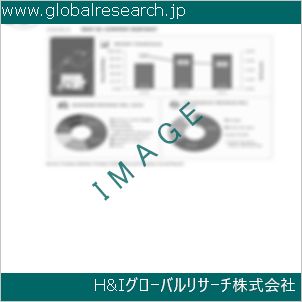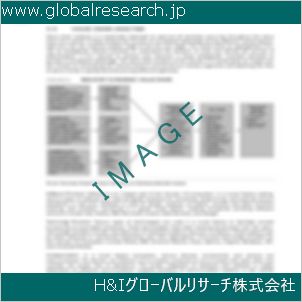1 Aprotic Dipolar Solvent Market Overview
1.1 Product Definition
1.2 Aprotic Dipolar Solvent Segment by Type
1.2.1 Global Aprotic Dipolar Solvent Market Value Growth Rate Analysis by Type 2022 VS 2029
1.2.2 Bio-based Proton-inert Solvent
1.2.3 Conventional Protic Solvents
1.3 Aprotic Dipolar Solvent Segment by Application
1.3.1 Global Aprotic Dipolar Solvent Market Value Growth Rate Analysis by Application: 2022 VS 2029
1.3.2 Petroleum and Natural Gas
1.3.3 Drug
1.3.4 Paints and Coatings
1.3.5 Electrical and Electronics
1.4 Global Market Growth Prospects
1.4.1 Global Aprotic Dipolar Solvent Production Value Estimates and Forecasts (2018-2029)
1.4.2 Global Aprotic Dipolar Solvent Production Capacity Estimates and Forecasts (2018-2029)
1.4.3 Global Aprotic Dipolar Solvent Production Estimates and Forecasts (2018-2029)
1.4.4 Global Aprotic Dipolar Solvent Market Average Price Estimates and Forecasts (2018-2029)
1.5 Assumptions and Limitations
2 Market Competition by Manufacturers
2.1 Global Aprotic Dipolar Solvent Production Market Share by Manufacturers (2018-2023)
2.2 Global Aprotic Dipolar Solvent Production Value Market Share by Manufacturers (2018-2023)
2.3 Global Key Players of Aprotic Dipolar Solvent, Industry Ranking, 2021 VS 2022 VS 2023
2.4 Global Aprotic Dipolar Solvent Market Share by Company Type (Tier 1, Tier 2 and Tier 3)
2.5 Global Aprotic Dipolar Solvent Average Price by Manufacturers (2018-2023)
2.6 Global Key Manufacturers of Aprotic Dipolar Solvent, Manufacturing Base Distribution and Headquarters
2.7 Global Key Manufacturers of Aprotic Dipolar Solvent, Product Offered and Application
2.8 Global Key Manufacturers of Aprotic Dipolar Solvent, Date of Enter into This Industry
2.9 Aprotic Dipolar Solvent Market Competitive Situation and Trends
2.9.1 Aprotic Dipolar Solvent Market Concentration Rate
2.9.2 Global 5 and 10 Largest Aprotic Dipolar Solvent Players Market Share by Revenue
2.10 Mergers & Acquisitions, Expansion
3 Aprotic Dipolar Solvent Production by Region
3.1 Global Aprotic Dipolar Solvent Production Value Estimates and Forecasts by Region: 2018 VS 2022 VS 2029
3.2 Global Aprotic Dipolar Solvent Production Value by Region (2018-2029)
3.2.1 Global Aprotic Dipolar Solvent Production Value Market Share by Region (2018-2023)
3.2.2 Global Forecasted Production Value of Aprotic Dipolar Solvent by Region (2024-2029)
3.3 Global Aprotic Dipolar Solvent Production Estimates and Forecasts by Region: 2018 VS 2022 VS 2029
3.4 Global Aprotic Dipolar Solvent Production by Region (2018-2029)
3.4.1 Global Aprotic Dipolar Solvent Production Market Share by Region (2018-2023)
3.4.2 Global Forecasted Production of Aprotic Dipolar Solvent by Region (2024-2029)
3.5 Global Aprotic Dipolar Solvent Market Price Analysis by Region (2018-2023)
3.6 Global Aprotic Dipolar Solvent Production and Value, Year-over-Year Growth
3.6.1 North America Aprotic Dipolar Solvent Production Value Estimates and Forecasts (2018-2029)
3.6.2 Europe Aprotic Dipolar Solvent Production Value Estimates and Forecasts (2018-2029)
3.6.3 China Aprotic Dipolar Solvent Production Value Estimates and Forecasts (2018-2029)
3.6.4 Japan Aprotic Dipolar Solvent Production Value Estimates and Forecasts (2018-2029)
4 Aprotic Dipolar Solvent Consumption by Region
4.1 Global Aprotic Dipolar Solvent Consumption Estimates and Forecasts by Region: 2018 VS 2022 VS 2029
4.2 Global Aprotic Dipolar Solvent Consumption by Region (2018-2029)
4.2.1 Global Aprotic Dipolar Solvent Consumption by Region (2018-2023)
4.2.2 Global Aprotic Dipolar Solvent Forecasted Consumption by Region (2024-2029)
4.3 North America
4.3.1 North America Aprotic Dipolar Solvent Consumption Growth Rate by Country: 2018 VS 2022 VS 2029
4.3.2 North America Aprotic Dipolar Solvent Consumption by Country (2018-2029)
4.3.3 United States
4.3.4 Canada
4.4 Europe
4.4.1 Europe Aprotic Dipolar Solvent Consumption Growth Rate by Country: 2018 VS 2022 VS 2029
4.4.2 Europe Aprotic Dipolar Solvent Consumption by Country (2018-2029)
4.4.3 Germany
4.4.4 France
4.4.5 U.K.
4.4.6 Italy
4.4.7 Russia
4.5 Asia Pacific
4.5.1 Asia Pacific Aprotic Dipolar Solvent Consumption Growth Rate by Region: 2018 VS 2022 VS 2029
4.5.2 Asia Pacific Aprotic Dipolar Solvent Consumption by Region (2018-2029)
4.5.3 China
4.5.4 Japan
4.5.5 South Korea
4.5.6 China Taiwan
4.5.7 Southeast Asia
4.5.8 India
4.6 Latin America, Middle East & Africa
4.6.1 Latin America, Middle East & Africa Aprotic Dipolar Solvent Consumption Growth Rate by Country: 2018 VS 2022 VS 2029
4.6.2 Latin America, Middle East & Africa Aprotic Dipolar Solvent Consumption by Country (2018-2029)
4.6.3 Mexico
4.6.4 Brazil
4.6.5 Turkey
5 Segment by Type
5.1 Global Aprotic Dipolar Solvent Production by Type (2018-2029)
5.1.1 Global Aprotic Dipolar Solvent Production by Type (2018-2023)
5.1.2 Global Aprotic Dipolar Solvent Production by Type (2024-2029)
5.1.3 Global Aprotic Dipolar Solvent Production Market Share by Type (2018-2029)
5.2 Global Aprotic Dipolar Solvent Production Value by Type (2018-2029)
5.2.1 Global Aprotic Dipolar Solvent Production Value by Type (2018-2023)
5.2.2 Global Aprotic Dipolar Solvent Production Value by Type (2024-2029)
5.2.3 Global Aprotic Dipolar Solvent Production Value Market Share by Type (2018-2029)
5.3 Global Aprotic Dipolar Solvent Price by Type (2018-2029)
6 Segment by Application
6.1 Global Aprotic Dipolar Solvent Production by Application (2018-2029)
6.1.1 Global Aprotic Dipolar Solvent Production by Application (2018-2023)
6.1.2 Global Aprotic Dipolar Solvent Production by Application (2024-2029)
6.1.3 Global Aprotic Dipolar Solvent Production Market Share by Application (2018-2029)
6.2 Global Aprotic Dipolar Solvent Production Value by Application (2018-2029)
6.2.1 Global Aprotic Dipolar Solvent Production Value by Application (2018-2023)
6.2.2 Global Aprotic Dipolar Solvent Production Value by Application (2024-2029)
6.2.3 Global Aprotic Dipolar Solvent Production Value Market Share by Application (2018-2029)
6.3 Global Aprotic Dipolar Solvent Price by Application (2018-2029)
7 Key Companies Profiled
7.1 Dow
7.1.1 Dow Aprotic Dipolar Solvent Corporation Information
7.1.2 Dow Aprotic Dipolar Solvent Product Portfolio
7.1.3 Dow Aprotic Dipolar Solvent Production, Value, Price and Gross Margin (2018-2023)
7.1.4 Dow Main Business and Markets Served
7.1.5 Dow Recent Developments/Updates
7.2 Eastman Chemical Company
7.2.1 Eastman Chemical Company Aprotic Dipolar Solvent Corporation Information
7.2.2 Eastman Chemical Company Aprotic Dipolar Solvent Product Portfolio
7.2.3 Eastman Chemical Company Aprotic Dipolar Solvent Production, Value, Price and Gross Margin (2018-2023)
7.2.4 Eastman Chemical Company Main Business and Markets Served
7.2.5 Eastman Chemical Company Recent Developments/Updates
7.3 BASF SE
7.3.1 BASF SE Aprotic Dipolar Solvent Corporation Information
7.3.2 BASF SE Aprotic Dipolar Solvent Product Portfolio
7.3.3 BASF SE Aprotic Dipolar Solvent Production, Value, Price and Gross Margin (2018-2023)
7.3.4 BASF SE Main Business and Markets Served
7.3.5 BASF SE Recent Developments/Updates
7.4 Ashland
7.4.1 Ashland Aprotic Dipolar Solvent Corporation Information
7.4.2 Ashland Aprotic Dipolar Solvent Product Portfolio
7.4.3 Ashland Aprotic Dipolar Solvent Production, Value, Price and Gross Margin (2018-2023)
7.4.4 Ashland Main Business and Markets Served
7.4.5 Ashland Recent Developments/Updates
7.5 Vizag Chemical International
7.5.1 Vizag Chemical International Aprotic Dipolar Solvent Corporation Information
7.5.2 Vizag Chemical International Aprotic Dipolar Solvent Product Portfolio
7.5.3 Vizag Chemical International Aprotic Dipolar Solvent Production, Value, Price and Gross Margin (2018-2023)
7.5.4 Vizag Chemical International Main Business and Markets Served
7.5.5 Vizag Chemical International Recent Developments/Updates
7.6 Merck KGaA
7.6.1 Merck KGaA Aprotic Dipolar Solvent Corporation Information
7.6.2 Merck KGaA Aprotic Dipolar Solvent Product Portfolio
7.6.3 Merck KGaA Aprotic Dipolar Solvent Production, Value, Price and Gross Margin (2018-2023)
7.6.4 Merck KGaA Main Business and Markets Served
7.6.5 Merck KGaA Recent Developments/Updates
7.7 IoLiTec
7.7.1 IoLiTec Aprotic Dipolar Solvent Corporation Information
7.7.2 IoLiTec Aprotic Dipolar Solvent Product Portfolio
7.7.3 IoLiTec Aprotic Dipolar Solvent Production, Value, Price and Gross Margin (2018-2023)
7.7.4 IoLiTec Main Business and Markets Served
7.7.5 IoLiTec Recent Developments/Updates
7.8 TamiSolve NxG
7.8.1 TamiSolve NxG Aprotic Dipolar Solvent Corporation Information
7.8.2 TamiSolve NxG Aprotic Dipolar Solvent Product Portfolio
7.8.3 TamiSolve NxG Aprotic Dipolar Solvent Production, Value, Price and Gross Margin (2018-2023)
7.8.4 TamiSolve NxG Main Business and Markets Served
7.7.5 TamiSolve NxG Recent Developments/Updates
7.9 MilliporeSigma
7.9.1 MilliporeSigma Aprotic Dipolar Solvent Corporation Information
7.9.2 MilliporeSigma Aprotic Dipolar Solvent Product Portfolio
7.9.3 MilliporeSigma Aprotic Dipolar Solvent Production, Value, Price and Gross Margin (2018-2023)
7.9.4 MilliporeSigma Main Business and Markets Served
7.9.5 MilliporeSigma Recent Developments/Updates
8 Industry Chain and Sales Channels Analysis
8.1 Aprotic Dipolar Solvent Industry Chain Analysis
8.2 Aprotic Dipolar Solvent Key Raw Materials
8.2.1 Key Raw Materials
8.2.2 Raw Materials Key Suppliers
8.3 Aprotic Dipolar Solvent Production Mode & Process
8.4 Aprotic Dipolar Solvent Sales and Marketing
8.4.1 Aprotic Dipolar Solvent Sales Channels
8.4.2 Aprotic Dipolar Solvent Distributors
8.5 Aprotic Dipolar Solvent Customers
9 Aprotic Dipolar Solvent Market Dynamics
9.1 Aprotic Dipolar Solvent Industry Trends
9.2 Aprotic Dipolar Solvent Market Drivers
9.3 Aprotic Dipolar Solvent Market Challenges
9.4 Aprotic Dipolar Solvent Market Restraints
10 Research Finding and Conclusion
11 Methodology and Data Source
11.1 Methodology/Research Approach
11.1.1 Research Programs/Design
11.1.2 Market Size Estimation
11.1.3 Market Breakdown and Data Triangulation
11.2 Data Source
11.2.1 Secondary Sources
11.2.2 Primary Sources
11.3 Author List
11.4 Disclaimer
| ※参考情報 非プロトン性双極性溶媒(Aprotic Dipolar Solvent)は、化学において非常に重要な役割を果たす溶媒の一種です。この溶媒は、特に有機反応や合成化学において広く利用されていますが、その特性や用途について理解を深めることは化学の研究や工業的応用において重要です。 非プロトン性双極性溶媒は、その名の通り、プロトン(H⁺)を供給する能力がない一方で、強い双極子モーメントを持つ溶媒です。この双極子モーメントは、分子内で電荷が偏っていることを示しており、極性のある化学種を溶解する能力を持っています。したがって、非プロトン性双極性溶媒は大きな分子やイオン化した化合物を溶解するのに適しているため、多くの化学反応で利用されます。 特に、この種類の溶媒は酸性や塩基性を持たず、したがって同時に酸・塩基として反応に関与することがありません。これにより、反応条件を厳密に制御することが可能で、通常のプロトン性溶媒(例えば水やアルコールなど)では行えない様々な反応を実施することができます。 非プロトン性双極性溶媒の特徴として、まずその極性があります。極性が高いことで、分子間の相互作用が強くなり、溶解度が向上します。さらに、非プロトン性であるため、溶媒が反応物に対して酸性や塩基性の影響を与えることが少なく、純粋な物質間の反応を促進しやすいのです。 このような非プロトン性双極性溶媒には多くの種類があります。一般的なものには、ジメチルスルホキシド(DMSO)、アセトニトリル(ACN)、テトラヒドロフラン(THF)などが含まれます。これらの溶媒は、化合物の合成や特定の化学反応において高い溶解能力を持っているため、研究や工業で広く使用されています。 例えば、DMSOは、抗菌作用や抗炎症作用を持つ医薬品の溶媒としてよく使われます。また、アセトニトリルは、クロマトグラフィーや電気化学分析に多く利用され、化学合成でも重要な役割を果たしています。テトラヒドロフランも特に重合反応での溶媒として重要視されています。これらの溶媒は、化学的な安定性が高く、反応に与える影響が少ないため、用途が広がっています。 さらに、メカニズムの観点からも非プロトン性双極性溶媒は面白い特性を持っています。この溶媒は、特に遷移金属触媒を使用する反応や、アニオン作用を伴う反応において重要です。例えば、ニッケルやパラジウムを用いたカップリング反応は、非プロトン性双極性溶媒中での実施が一般的です。この場合、溶媒が反応の進行に与える影響は無視できないため、選択した溶媒の物理的特性が反応の収率や選択性に大きく関わることがわかります。 加えて、最近の研究では、非プロトン性双極性溶媒の利用が持つ環境への影響や持続可能性についても議論が進められています。多くの非プロトン性溶媒は有機溶媒としての特性が強いため、揮発性有機化合物(VOC)として環境へ悪影響を及ぼす可能性があります。このため、環境に優しい代替溶媒の開発が進められており、非プロトン性双極性溶媒に関する研究も新たな展開を見せています。 結論として、非プロトン性双極性溶媒は、化学反応においてその配位性が高く、反応条件を選択する上での利点が多い溶媒です。その種類や特性、用途、さらには環境への配慮といった観点から、その重要性はますます高まっています。化学および材料科学の分野において、今後も非プロトン性双極性溶媒の研究は続くことでしょう。 |
❖ 免責事項 ❖
http://www.globalresearch.jp/disclaimer












